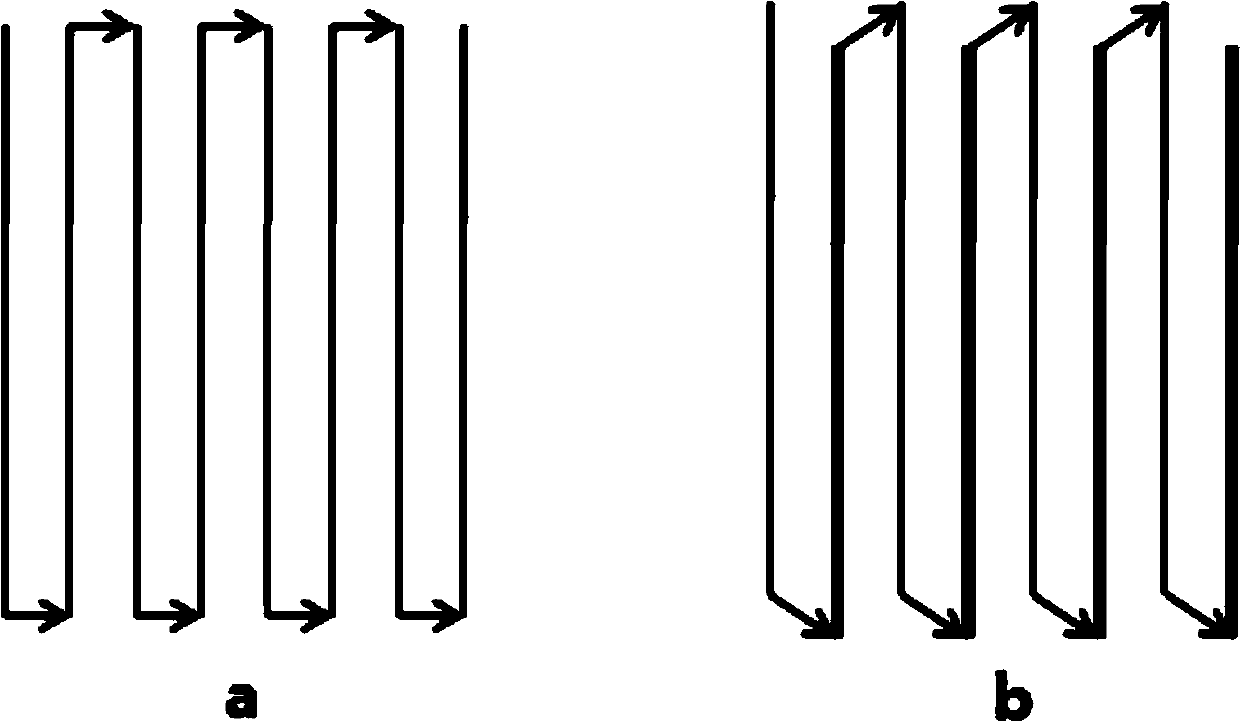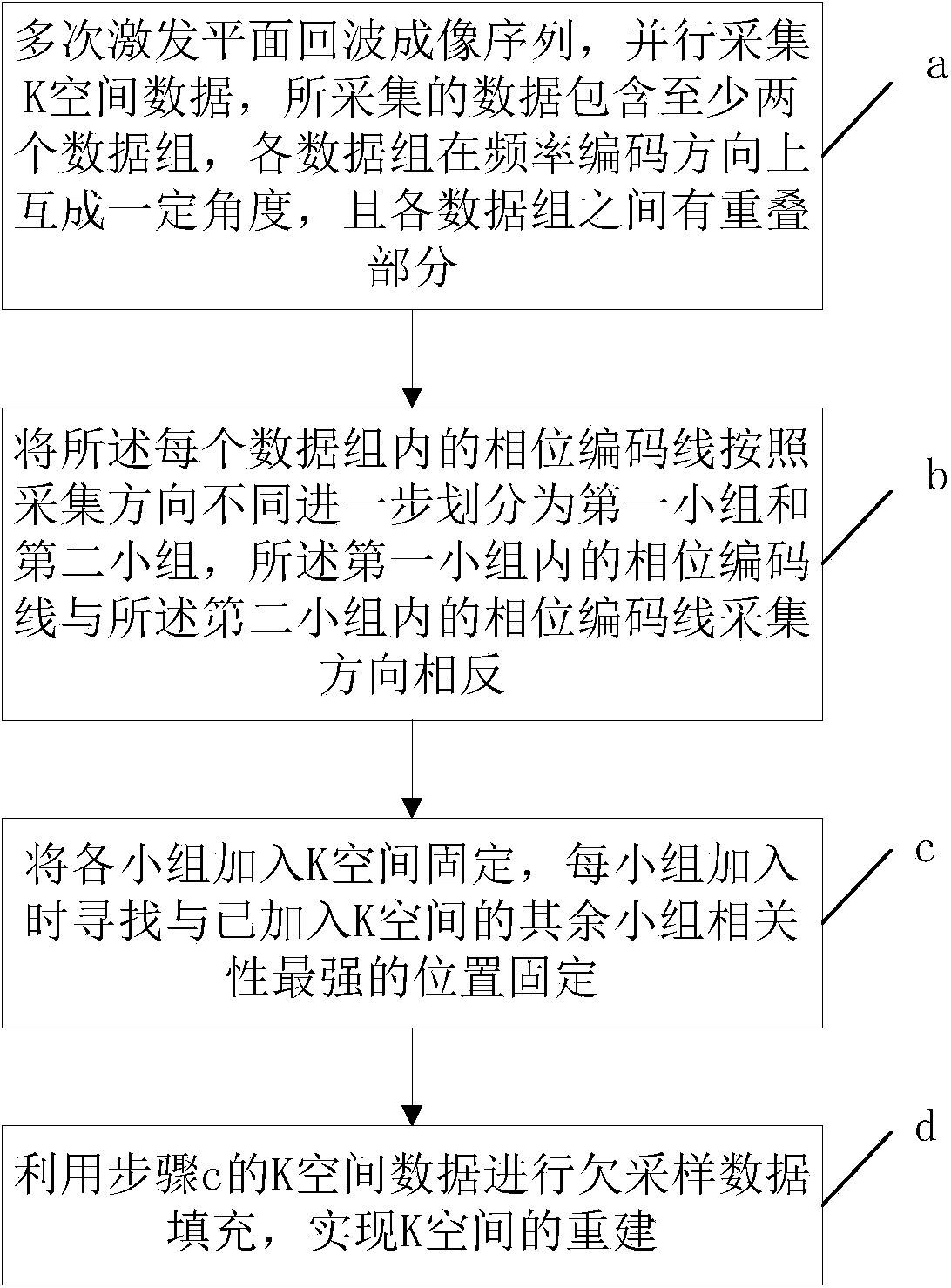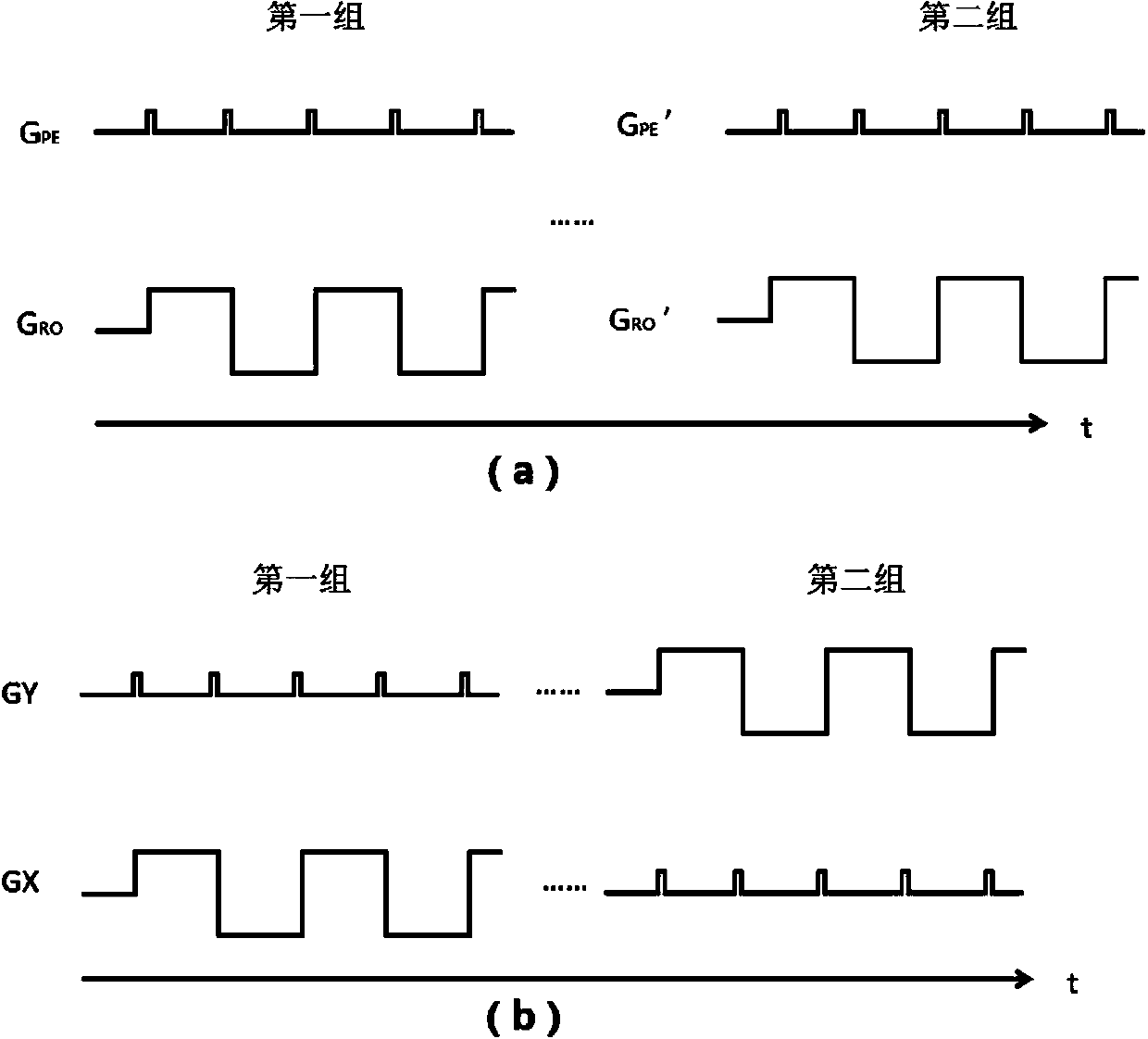K space reconstruction method and device
A K-space, opposite direction technology, applied in magnetic resonance measurement, measurement using nuclear magnetic resonance imaging system, and magnetic variable measurement, etc., can solve the problems of limiting imaging speed, increasing time loss when collecting calibration data, and improving imaging speed. , to achieve the effect of eliminating artifacts and saving time.
- Summary
- Abstract
- Description
- Claims
- Application Information
AI Technical Summary
Problems solved by technology
Method used
Image
Examples
Embodiment 1
[0045] Excite EPI (multishot EPI, MS-EPI) multiple times, and collect K-space data in parallel. Among them, after one RF pulse excitation, the readout gradient field is used to continuously switch to collect multiple gradient echoes, and to fill multiple phase encoding lines in K space, multiple RF pulse excitations and corresponding times of EPI acquisition and data roundabout filling are required to complete the entire process. Filling of K-space. The number of excitations required for MS-EPI depends on the K-space phase encoding step and the echo chain length (ETL). If the K-space phase encoding step is 128 and ETL=16, then 8 excitations are required.
[0046]Before the actual K-space data is collected, the K-space data to be collected is divided into multiple data groups, and the multiple data groups form a certain angle with each other in the frequency encoding direction, and some data overlap. For the convenience of description, this embodiment divides the K-space data...
PUM
 Login to View More
Login to View More Abstract
Description
Claims
Application Information
 Login to View More
Login to View More - R&D
- Intellectual Property
- Life Sciences
- Materials
- Tech Scout
- Unparalleled Data Quality
- Higher Quality Content
- 60% Fewer Hallucinations
Browse by: Latest US Patents, China's latest patents, Technical Efficacy Thesaurus, Application Domain, Technology Topic, Popular Technical Reports.
© 2025 PatSnap. All rights reserved.Legal|Privacy policy|Modern Slavery Act Transparency Statement|Sitemap|About US| Contact US: help@patsnap.com



